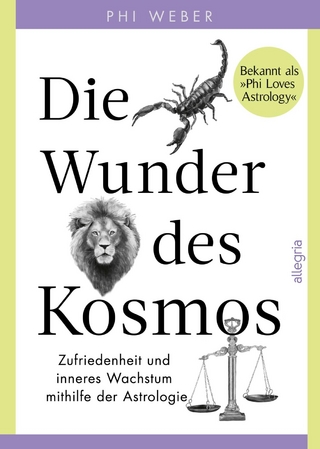
The Drake Equation
Cambridge University Press (Verlag)
978-1-107-07365-4 (ISBN)
In this compelling book, leading scientists and historians explore the Drake Equation, which guides modern astrobiology's search for life beyond Earth. First used in 1961 as the organising framework for a conference in Green Bank, West Virginia, it uses seven factors to estimate the number of extraterrestrial civilisations in our galaxy. Using the equation primarily as a heuristic device, this engaging text examines the astronomical, biological, and cultural factors that determine the abundance or rarity of life beyond Earth and provides a thematic history of the search for extraterrestrial life. Logically structured to analyse each of the factors in turn, and offering commentary and critique of the equation as a whole, contemporary astrobiological research is placed in a historical context. Each factor is explored over two chapters, discussing the pre-conference thinking and a modern analysis, to enable postgraduates and researchers to better assess the assumptions that guide their research.
Douglas A. Vakoch is Director of Interstellar Message Composition at the SETI Institute and Professor of Clinical Psychology at the California Institute of Integral Studies. He also serves as chair of the International Academy of Astronautics Study Group on Interstellar Message Construction, and has edited numerous books in the field of astrobiology and space exploration. Matthew F. Dowd is an editor at the University of Notre Dame Press and teaches periodically on the Program of Liberal Studies. He has been instrumental in organizing Notre Dame's biennial History of Astronomy conferences and in 2011 received the Adler-Mansfield Prize for contributions to the history of astronomy.
List of contributors; Foreword Frank Drake; Preface; Acknowledgements; Introduction Steven Dick; 1. Rate of formation of stars suitable for the development of intelligent life, R*, pre-1961 David DeVorkin; 2. Rate of formation of stars suitable for the development of intelligent life, R*, 1961 to the present Patrick François and Danielle Briot; 3. Fraction of stars with planetary systems, fp, pre-1961 Matthew F. Dowd; 4. Fraction of stars with planetary systems, fp, 1961 to the present Chris Impey; 5. Number of planets, per solar system, with an environment suitable for life, ne, pre-1961 Florence Raulin Cerceau; 6. Number of planets, per solar system, with an environment suitable for life, ne, 1961 to the present Danielle Briot and Jean Schneider; 7. Fraction of suitable planets on which life actually appears, fl, pre-1961 Stephané Tirard; 8. Fraction of suitable planets on which life actually appears, fl, 1961 to the present David J. Des Marais; 9. Fraction of life-bearing planets on which intelligent life emerges, fl, pre-1961 Michael Crowe; 10. Fraction of life-bearing planets on which intelligent life emerges, fl, 1961 to the present Lori Marino; 11. Fraction of civilizations that develop a technology that releases detectable signs of their existence into space, fc, pre-1961 Florence Raulin Cerceau; 12. Fraction of civilizations that develop a technology that releases detectable signs of their existence into space, fc, 1961 to the present Seth Shostak; 13. Length of time such civilizations release detectable signals into space, L, pre-1961 David Dunér; 14. Length of time such civilizations release detectable signals into space, L, 1961 to the present Garry Chick; Afterword Paul Davies; Index.
| Erscheint lt. Verlag | 2.7.2015 |
|---|---|
| Reihe/Serie | Cambridge Astrobiology |
| Vorwort | Frank Drake |
| Zusatzinfo | 35 Halftones, unspecified; 10 Line drawings, unspecified |
| Verlagsort | Cambridge |
| Sprache | englisch |
| Maße | 178 x 252 mm |
| Gewicht | 830 g |
| Themenwelt | Sachbuch/Ratgeber ► Gesundheit / Leben / Psychologie ► Astrologie |
| Naturwissenschaften ► Physik / Astronomie ► Astronomie / Astrophysik | |
| ISBN-10 | 1-107-07365-0 / 1107073650 |
| ISBN-13 | 978-1-107-07365-4 / 9781107073654 |
| Zustand | Neuware |
| Haben Sie eine Frage zum Produkt? |
aus dem Bereich


